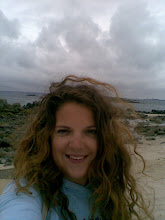The End
On completion of my foundation degree, my next step is to top up to a BSc in Environmental Science at the University of Plymouth. Over the last two years many new opportunities and pathways have been opened up for me and I hope that on graduating plymouth I will be able to find any sort of job in the Environmental sector, as a new graduate I know that competition will be high, so I will also endevour to undertake as much voluteer work as possible. I have also been toying with the idea of going to study for a Masters in Economics and Politics, as I feel that having an understanding of the processes that shape and run our country and indeed the world is very important in effecting any sort of fundamental changes.
Falmouth and Truro Port Health Authority
There are a number of threats and variables in need of close monitoring including:
- sewage disposal
- rainfall
- land run off
- tide
The reason why it is so crucial to monitor these things is because the carrick roads is home to a number of fisheries such as mussels and oysters, these are filter feeders capable of filtering up to 10.24 litres of water an hour which makes them particularly vulnerable to infectins and dieseases for example, hepatitus A, Norovirus and E. coli (an indicator of other diesease).
As they can not test for theese things themselves, they take samples and send them off for analysis at CEFAS who they work closely with, CEFAS will then make recomendatins, and the Food Standards Agency (FCA) will make the final decision on what classification the water should be. The criteria for classifying water is as follows:
- Class A <>
- Class B <>
- Class C <>
In 2007 the amount of waters classified at each class were as follows:
- A - 2.6%
- B - 88.4%
- C - 1.9%
The issues that regularly effect the Carrick roads are:
- Variable E. coli results, which fluctuate daily, sometimes even hourly. As a low E. coli result does not neccessarily mean there is an absence of the virus in the flesh of molluscs it is important to monitor closely.
- As down or up grading the classification of a body of water can have serious consequences, classification decisions must be based on data trends not on individual results, with this in mind at least 10 sets of results must be taken before any decision can be made.
Biodiversity Action Plans (BAPs)
http://www.ukbap.org.uk
http://www.cornwallwildlifetrust.org.uk/
http://www.jncc.gov.uk/
Biodiversity Convention 1992 (Rio Summit)
- plants
- animals
- micro-organisms
- ecosystems
- people
- food
- security
- medicine
- air
- water
- shelter
Abstracts from: English Nature - Full Review of the Coastal Management Sector Analysis
Background
Englands coast supports an abundance of wildlife habitats and physical features. These special places depend on the interactions between wind, waves, tides, sediments and geology to shape and sustain thei nature conservation interest. Over time coastal habitats an features change so their effective conservation involves providing sufficient space to allow them to move and evolve in response to the action of the sea.
The Way Ahead
English Nature supports Government policy that all flood and costal erosion risk management schemes should be environmentally acceptable and provides advice to operating authorities on this aspect of all coastal management schemes based on reasoned judgements.
The conservation of important terrestrial and freshwater features that are presently protected by sea defences i a related issue. In the face of rising sea levels defending such sites in situ will often be unsustainable, expensive and exacerbate the problems of the coastal squeeze for intertidal habitats in front of seawalls. In such circumstances the best conservation option will be achieved by manged realignment and re-creating freshwater habitats in sustainable locations elsewhere.
Integrated Coastal Zone Management (ICZM)
'A process that brings together all those involved in the development, management and use of the coast within framework that facilitates the integration of their interests and responsibilities. The objestive is to establish sustainable levels of economic and social activity in our coastal areas while protecting our coastal environment. ICZM is central to the ecosystem-based aproach.'
This is a method that has already been implemented by the Welsh Assembly Government (see hyperlink for more info). http://new.wales.gov.uk/topics/environmentcountryside/env_cons_management/countrysidecoastalaccess/iczm/?lang=en
September / October 2007
- climate change and sea level rise
- the natural processes of the coastal environment that both creates and destroys
- impact of anthropogenic activities such as the marine leisure industry that take place on and threaten the coastline
- ownership
- shoreline management
- shoreline protection techniques
- coastal erosion
